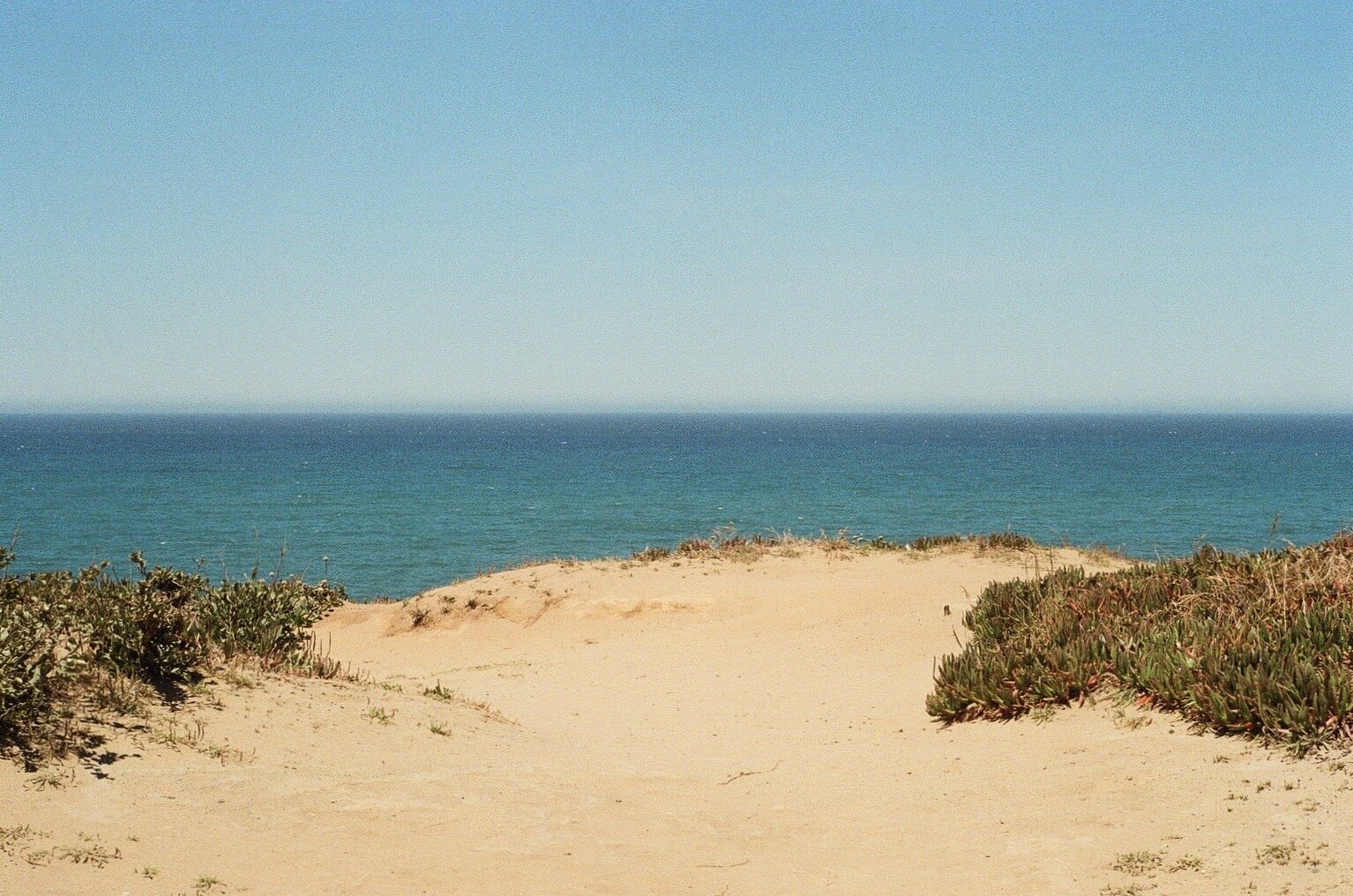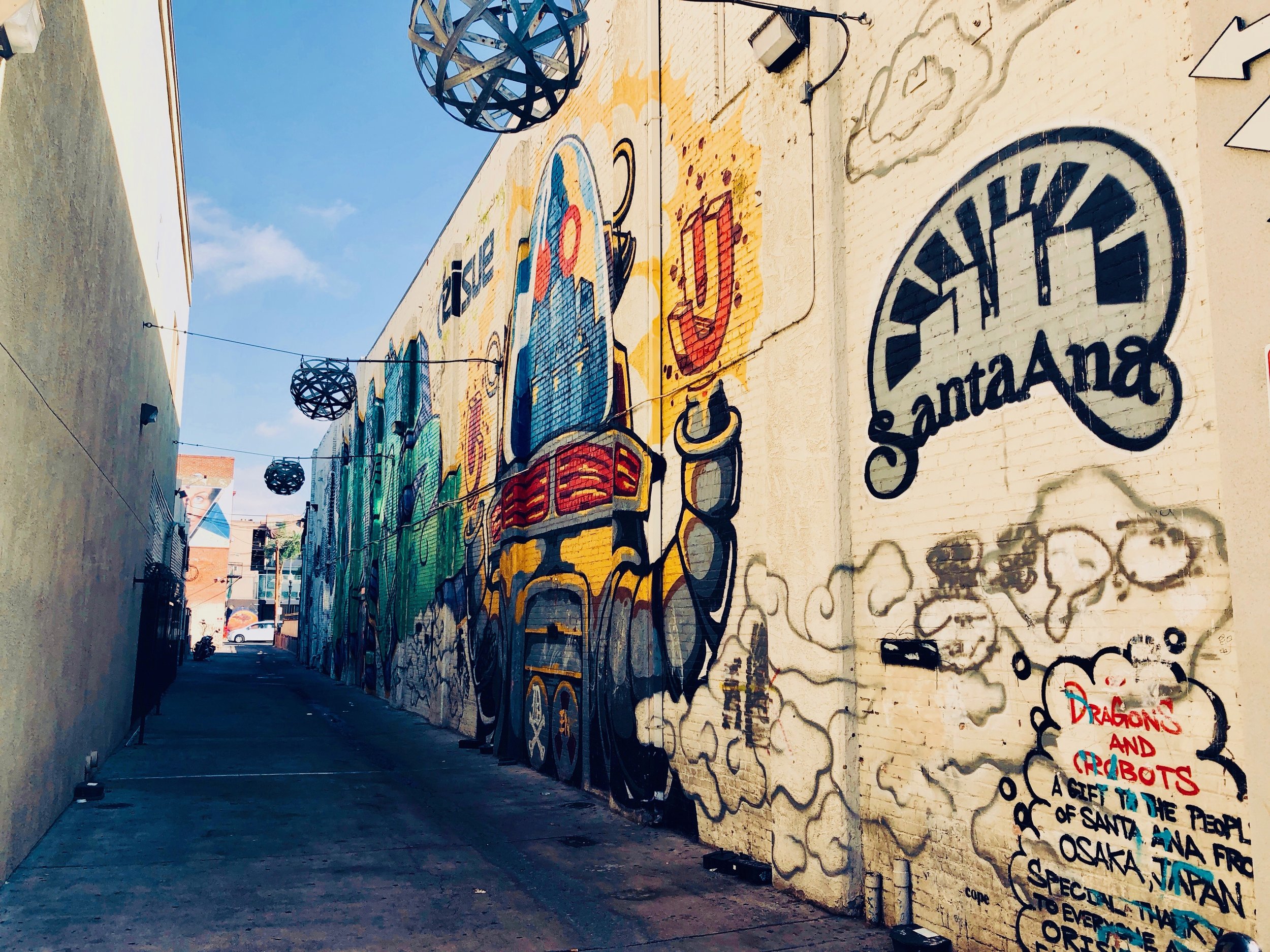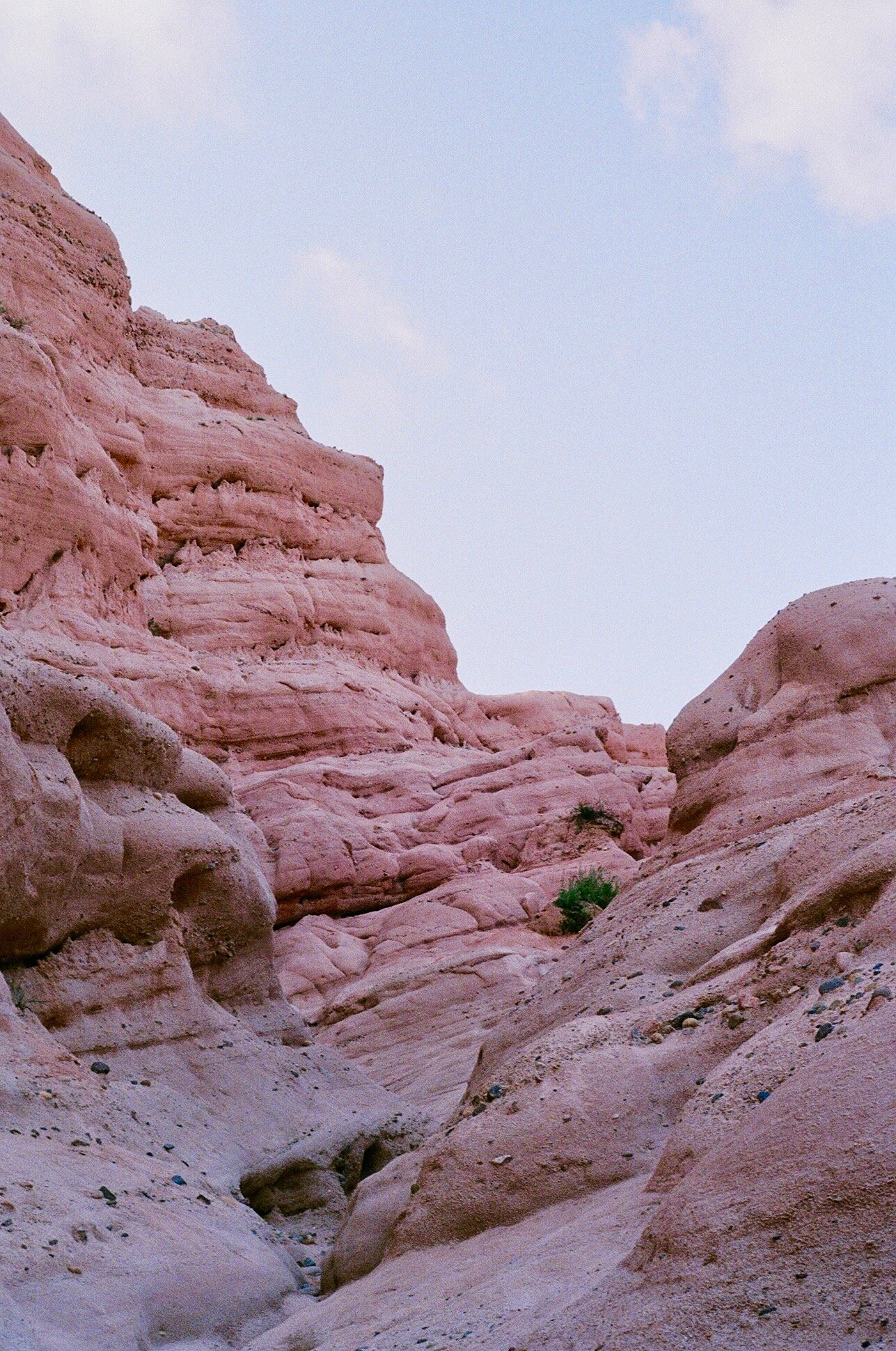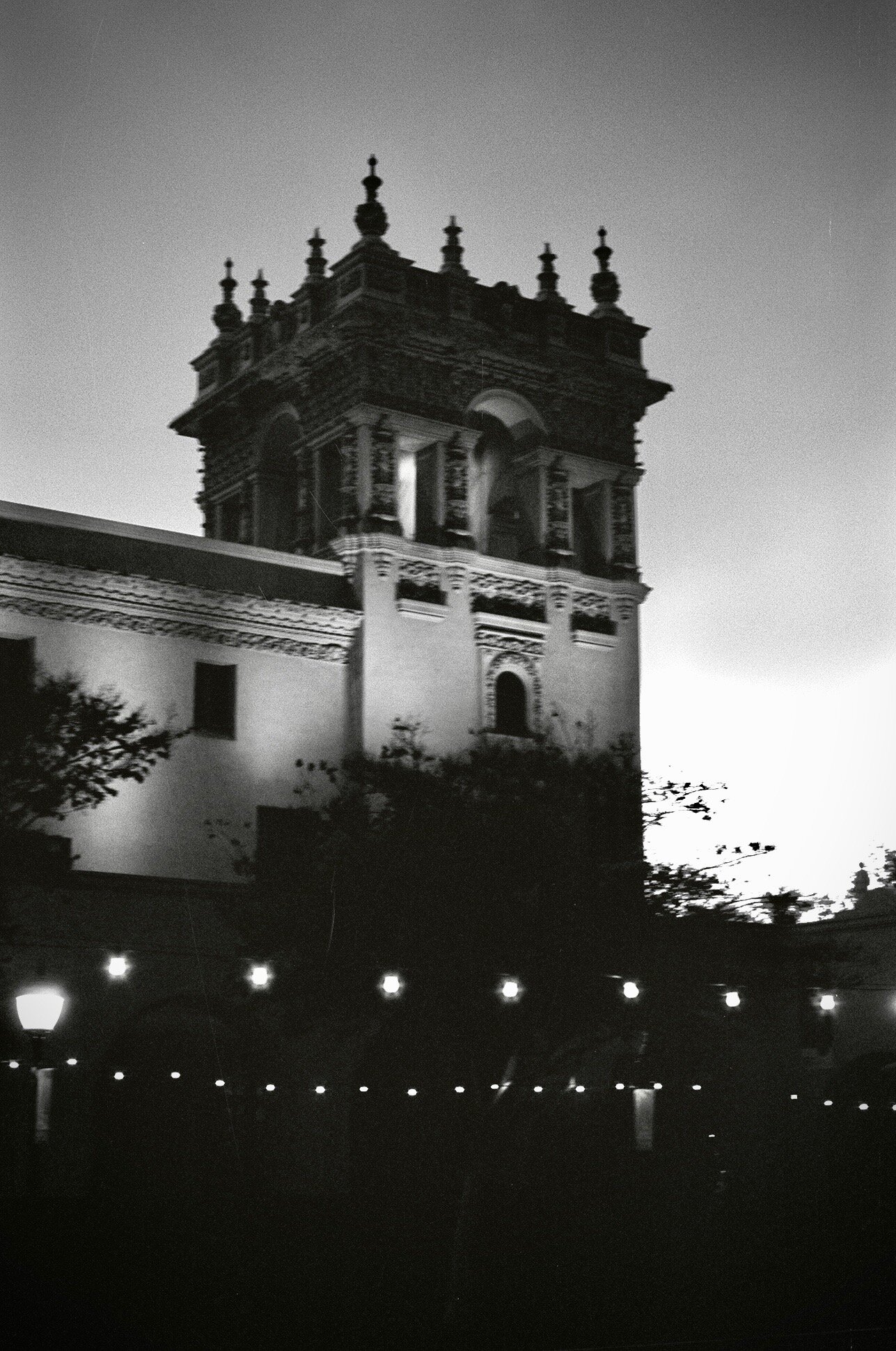PACIFIC COAST HIGHWAY

“Our age is retrospective. It builds the sepulchres of the fathers. It writes biographies, histories, and criticism. The foregoing generations beheld God and nature face to face; we, through their eyes. Why should not we also enjoy an original relation to the universe? Why should not we have a poetry and philosophy of insight and not of tradition, and a religion by revelation to us, and not the history of theirs? Embosomed for a season in nature, whose floods of life stream around and through us, and invite us by the powers they supply, to action proportioned to nature, why should we grope among the dry bones of the past, or put the living generation into masquerade out of its faded wardrobe? The sun shines to-day also. There is more wool and flax in the fields. There are new lands, new men, new thoughts. Let us demand our own works and laws and worship.”
Ralph Waldo Emerson, From his 1836 essay Nature
Emerson has long been my favorite philosopher. Likely because he arguably formulated the first uniquely American school of philosophy, Transcendentalism (along with his pupil Thoreau), but more so because his views just land well with me. Any time a concept can attain profundity while remaining simplistic is a cause for pause.
In the above quote, Emerson notes a disturbing trend of the people of his time relying too heavily on tradition rather than direct experience. Emerson believed that if God (or anything for that matter) is true in the world, any person should be able to understand it by direct contact with Nature and without the need for guiding texts. He matured the ideal further still, raising the alarm against the sloth of many who allow others to tell them how the world works for them. This may seem in contradiction with points I made in my recent post, A Pilgrimage, in which I lamented that too many of us have become reliant on secondary sources and need reengage with primary texts. I’d argue that I’d expect Emerson to agree with me, noting that experience, as John Locke and the Empiricists would say, is the ultimate primary source, but that leaning into the experiences others have had and conflating theirs against ours can expedite the processes driving our understanding and help circumvent known roadblocks that generations before us have already identified.
One of these roadblocks, perhaps the roadblock, is the question of “What Does It All Mean?”
While I of course can’t answer that for every reader let alone every person, I’ve long loved Anthony Bourdain’s answer to an interviewer who asked him if he felt like he was “running away from something”, to which he replied “No, in fact I’ve always felt like I’m running towards something”. That sense, of moving towards a greater Truth, is one that I’ve felt since I was a young kid. And in me, it’s more often than not manifested in the physical form. I like to physically move towards understanding. The very premise of this blog is a simple formula that abides by this preference and into which I’ve fallen accidentally:
Study an idea
Walk around and see how the idea affects my perception of the world as I do so
Come back, develop the film I shot along the way and write down what I felt
That pull, the pull towards “over there”, was traditionally for me along a North/South axis. That’s because my hometown of Laguna Beach is built on one main thoroughfare from end to end with only one other road into town besides it. That thoroughfare is no ordinary road, but the legendary Pacific Coast Highway. It has run a literal and ontological thread through my life in that its length quite pragmatically defined the route to “the beyond”. It’s the most enduring reference point I’ve had, holding for me the significance that the Camino de Santiago might hold to a Spaniard and the many more pilgrims who walk its length. It’s exactly that, I’d say... it’s California’s answer to the many other great pilgrimages of the world, yes. And what a hell of an answer she is, PCH. She is the pin-up girl of public works projects.
Pacific Coast Highway is the prettiest road in the United States of America.
There, I said it. Yes the road to Hana is verdant, the Great Smoky Mountains stoic, Route 66 iconic, but none cover such a tremendous breadth of pleasing geology in one span as PCH (though for a truly comprehensive overview of American geology, as detailed in works such as John McPhee’s Pulitzer-Prize winning Annals of The Former World, you’ll need to traverse East-West versus North-South, albeit enduring far more bland and blanched country). And as a kid growing up, the notion of the road to “what it all means” in all life took on the most pragmatic sense: it was a few blocks from my house and wherever life would take me, it probably lay to the north. North I say, because going south would quickly get you to the Mexican border and was a segment with which I already had great familiarity.
As it turns out, going north on PCH will invite you into parts of this continent that provide ample opportunity for the experience Emerson describes above. Fortunately or unfortunately, the vast majority of discussion around this epochal road focuses on the Big Sur region, centered on roughly 90 miles of rural and dramatic cliffside driving along the sea between Carmel and San Simeon. Big Sur is rightly famous. I’m not one to say that a place isn’t worth visiting simply because it’s well known; I can’t stand that. After all, my favorite landmark in NYC isn’t some backwater diner that I hold dear but in fact is Grand Central’s famed Main Concourse.
Still, to equate PCH with just the southern sections in San Diego, Orange County, Ventura, LA, Santa Barbara and up into Central California is to miss parts of the state that yield some of the “purest” and untampered California spirit to be found. Specifically, the sections between Santa Cruz and San Francisco and then north of SF along the coasts of Sonoma and Mendocino are just as attractive and fetching. I’d long wondered as a kid what Laguna must have looked like before homes were built. As it turns out, these parts of the highway are the living answer.
First off, the Santa Cruz to SF section. There are a few towns along the way, but the real draw is the undulating cliffs that rise slightly at their crests and dip down with equal grace near inlets and river mouths for dozens of miles. The countryside around Davenport and Pescadero is what comes to mind for me if someone were to ask what I see as being the most uniquely Californian landscape in the state. It’s not something you’ll find anywhere else in America and is as exemplary of a definition of the word bucolic as I’ve ever found.
At one point in driving this stretch, I asked Elena if we could pull over for an hour so I could meditate. It’s rare that I’m afforded the luxury of so much carefree time and rarer still to find in this universe a girl sweet enough to walk the lengths of a random, windstruck beach so her pompous, “theologian” boyfriend can sit in silence. I don’t often reference my meditative practice; for one, it’s treacherous territory to announce one’s spiritual exercises without sounding like a total douchebag, and two, it’s inherently impossible to articulate practices that deliberately transcend the finitude of language. Still, I’d say that what Emerson touches on in the aforementioned quote is precisely the pull that brings me to places like this and the same pull that I felt when I’d stare up the centerline of PCH wondering where it led many years ago. If you’re going to “get quiet” somewhere and try to understand what it all means, to feel small but nonetheless a part of… this is one of the better places on our planet to do so.
I can’t remember the name of the small cove into which we’d pulled, but it was windy. Windy in a good way, as it woke you up and scratched white caps into the expansive sea like chalk on a chalkboard. I prefer Nature in its most dynamic forms, where gusts are whipping you and water is surging and things are falling from the sky. I find Nature’s aliveness more comprehensible when I’m receiving a masochistic deliverance of hail on a run across the Brooklyn Bridge than I do during a well-curated summer day. The northern reaches of California offer this up on the daily, and all the more so the further up you head. Such is the case in the second section of coastline I’ll highlight, that of Sonoma and Mendocino Counties’ length of PCH.
In Big Sur, we were probably the only folks on the road rushing to get “through it” so we could enjoy the stretches of coast farther north (we’ve also both been to Big Sur countless times). Still, it’s undeniably gorgeous, as seen above. Off PCH. Kodak Porta, Pentax K1000.
Big Sur. Kodak Porta, Pentax K1000.
Big Sur. Kodak Porta, Pentax K1000.
Big Sur. Kodak Porta, Pentax K1000.
The SS Palo Alto, shipwrecked in Aptos, CA. Kodak Porta, Pentax K1000.
Aptos, CA. Kodak Porta, Pentax K1000.
Moss Landing, CA. Kodak Porta, Pentax K1000.
Warning sign at the famed surf big wave surf spot, Maverick’s. Kodak Porta, Pentax K1000.
Off of Pacific Coast Highway. Kodak Porta, Pentax K1000.
The van we rented, parked cliff-side somewhere between Santa Cruz and San Francisco. Kodak Porta, Pentax K1000.
Looking north towards San Francisco, from PCH. Kodak Porta, Pentax K1000.
An empty beach, an easy find up there. Kodak Porta, Pentax K1000.
Off PCH. Kodak Porta, Pentax K1000.
Elena and the van. Off PCH. Kodak Porta, Pentax K1000.
Off PCH. Kodak Porta, Pentax K1000.
Stopped through Santa Cruz and snapped this shot that has nothing to do with anything. Kodak Porta, Pentax K1000.
Kodak Porta, Pentax K1000.
Near Point Arena, Mendocino County, CA. Kodak Porta, Pentax K1000.
Candid shot of Elena, somewhere in Mendo. Kodak Porta, Pentax K1000.
Sonoma Coast. Kodak Porta, Pentax K1000.
Sonoma Coast. Kodak Porta, Pentax K1000.
Sonoma Coast. Kodak Porta, Pentax K1000.
Sonoma Coast. Kodak Porta, Pentax K1000.
Fields on the way home, somewhere in rural Santa Barbara County. Kodak Porta, Pentax K1000.
The mighty oak tree. Somewhere in SB, on the way home. Kodak Porta, Pentax K1000.
Vineyard on the way home, somewhere in Santa Barbara County. Kodak Porta, Pentax K1000.
One can think of them as an amalgamation of the respective features of Big Sur and the country around Davenport referenced earlier. You’ll get tall golden grasses and equally blue seas while taking on comparable gains in elevation and slope to the cliffs of Big Sur. All this and with far fewer people than either locale. The Sonoma County Coast in particular is the sort of place that comes to mind for me in reading Emerson’s line, repeated again here:
“Embosomed for a season in nature, whose floods of life stream around and through us, and invite us by the powers they supply, to action proportioned to nature, why should we grope among the dry bones of the past, or put the living generation into masquerade out of its faded wardrobe? The sun shines to-day also.”
It’d be futile for me to describe the “places” along the length of this latter section of the highway. There aren’t places nor destinations in the classic sense to be found. TripAdvisor stammers blankly in these parts, thank God. What you will find are countless beaches, vistas, rivers meeting the ocean, sea otters, falcons, wildflowers, dramatic cliffs, Deadheads, country folk and not much else.
As Patanjali would have us consider in his famed Yoga Sutras that I’m reading this week, we come to understand the Universe through single-pointed concentration and the awareness that arises out of it. I’m nowhere near reaching “that” or that-ness, whatever that may be. The common Indian mantra Tat Tvam Asi, or “Thou Art That”, points to this goal of realizing that oneself is part of something bigger.
Whether it be Ralph Waldo Emerson in Massachusetts or Patanjali in the Indian Subcontinent, the message is clear: making space for direct and unfettered understanding of the Universe is compulsory to a fulfilled and joyous life.
These stretches of the Pacific coastline are as good as any for doing so. I hope you one day enjoy them.































